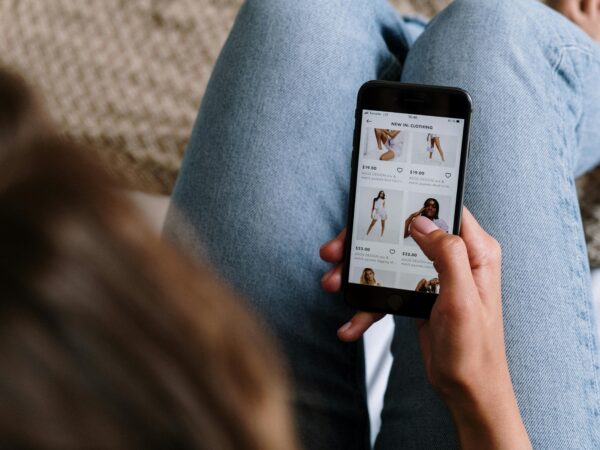How to Avoid Common Packaging Pitfalls
Read expert advice on how to protect your product and build a stronger brand by avoiding these common packaging pitfalls.

Your product packaging serves several purposes. First, it protects your product during shipping, processing, and retailing. Second, it creates a targeted branded message that introduces your product to customers.
You want your product packaging to reflect what’s unique about your product and your brand. You want it to give customers all the information they need about your product (and comply with any applicable regulations). You also want your product packaging to withstand the physical demands of shipping and retail. This can be a tall order, and you may hit some speed bumps along the way, especially if this is your first small business venture.
Doug Ramsey, Print Production Packaging Manager at Samuel Adams talks us through several pitfalls that may foul up the creation and implementation of your product packaging:
1. Research Your Vendors
Good vendors are critical to a seamless package and aesthetically pleasing product display. In order to achieve your packaging goals, you will need top-notch vendors to take your vision from imagination to physical completion. They’re the ones that supply the materials for your packaging and may also be responsible for the packaging process, so you’ll want to know that they’re reliable, consistent, and use high-quality materials in line with your brand values. Of course, you’ll also need to consider the pricing.
All of this entails researching potential vendors. You can always start with a quick search online or check out an industry magazine to see what your options are. Meet with them for a consultation. Take a look at their portfolio of work and ask questions about what their products are like and what the process would be for you to work together.
There are plenty of large regional or national vendors out there, but don’t overlook the smaller local options. They may be able to work more closely with you and may be more flexible in their offerings. They may also be more responsive and less expensive, since they don’t have the overhead associated with a bigger company.
Once you do find vendors that you want to work with, it’s important to cultivate that working relationship. Establish good modes of communication with all of your vendors, and try to collaborate on making the best product packaging that you can together. Stay informed and involved – this is a partnership that’s critical to the success of your business.
2. Invest Wisely in Professionals
Your product packaging may be the first thing that many prospective customers will see and feel. You want packaging that knocks it out of the park so that your potential customers are wowed.
If your budget allows, consider seeking professional designers to work on your packaging. They know the market and have experience in how different products can be packaged. They’ll be well versed in attracting your target demographic and they can frequently help you ensure that your packaging fits within local and federal regulations. They’ll also be able to show you a number of different options – color schemes, layouts, fonts – so that you can choose which one looks right for your brand. You can also work with the designer to tweak those options until you’re happy with the final product.
Hiring a designer does cost more than doing it yourself, but is likely to be worth the cost in many cases. They’ll know how to manage the different shapes, sizes, and protection requirements of your products. They’ll be highly knowledgeable regarding the packaging production process and will know how to use all of the technical and creative software necessary to take your packaging from design to actuality.
If you’re not comfortable designing, prototyping, and creating your own packaging, a professional designer can make the difference between a successful launch and a failure. The last thing you want is to put a bunch of work into designing your packaging yourself only to find that it doesn’t function the right way or doesn’t send the right brand message.
3. Quality is Your First Priority
When designing packaging, there’s a fine balance between form and function; the visual appeal of the package and its overall functionality. In an ideal world, you’ll have a stunning packaging concept that protects your product to perfection. In reality, you’ll probably have to make some tradeoffs to ensure that you meet the most important goals and still keep the price under control.
Work with your designer to determine which packaging materials will offer the most protection for your product. Keep in mind that you want to keep your product safe and intact through all phases of production -this includes shipping, retail sales, etc. Is your product breakable? Does it need to be refrigerated or protected from moisture, light, or air? These functional aspects are key – the most attractive packaging in the world isn’t worth anything if the product itself if broken, spoiled, or damaged.
This is especially true if your product is perishable. You may need to dig into some engineering to design packaging that keeps your product safe, temperature-controlled, or shelf-stable. You may also want to build in certain types of functionality. Think of a milk carton or a bag of shredded cheese that you can reseal. They seal in the freshness of the product but also make things easier for the consumer in other ways. Other examples include freshness seals to make sure your customers know the product is intact or serving suggestions that make your product easier to use.
In addition to the utilitarian aspects of your packaging, there are also marketing concerns. Your packaging can help you stand out from the pack on a crowded shelf. Little extras (like the facts under Snapple caps) can make your brand special to your customers and sometimes that little bit extra is all it takes to create a loyal following. Exceptional packaging is its own form of marketing, so make the most of it.
You’ll also need to consider your brand’s image. Are you pushing an eco-friendly message? You may want to cut down on the packaging and advertise that you’re cutting back on waste. You could include an image on the packaging showing how much plastic, paper, and other resources are saved by your minimalistic packaging.
Finally, don’t skip the prototyping and tweaking stages of design. Make sure that you actually try your packaging out. Is it easy to use? This can make a huge difference – no one likes clamshell packaging, for example, and this kind of inconvenience may be enough to drive your customers to other options. Is it sturdy enough for your needs? Is there a way you can make it more useful or more attractive to your customers? Have you included all the information your customers need?
4. Don’t Fear Change
Don’t be afraid to change your packaging to try a new aesthetic or branding concept. In order to find out what works best, sometimes you need to experiment. The only way to do that is by mixing things up and trying out new concepts and ideas.
If your chosen packaging isn’t working for your product, explore other options. Opportunities abound for rebranding and trying out new designs and concepts, so don’t feel like you’re married to your first packaging attempt. Strong brands and products evolve over time and yours should too.
Know that you may need to go back to the drawing board several times to get the right fit for packaging. Rest assured, this is normal and most businesses go through some growing pains in this phase of product development. Don’t get discouraged – change is part of growth and you’ll learn a lot about your customers and your product during this process.
5. Listen to Feedback
Be open to constructive criticism. Pay attention to feedback from those around you in order to better your product. Consumers are the ones buying your product, so their advice matters. Since they are familiar with your product (and probably your competitors), they’ll often have practical advice on how you can improve your packaging.
One way to find out exactly what your customers are saying about your products in real time is by monitoring your social media platforms. Keep your eyes and ears open to compliments, complaints, and general buzz about your product or packaging. Take their comments and feedback to heart and use that information to inform your packaging concepts and designs. When you’re launching a new product or new packaging concept, generate buzz online by posting about exciting new developments. If those changes were driven by customer suggestions, make sure to advertise the fact! Let them know that you’re listening to them.
The Bottom Line
Think of your product packaging as your customers’ first impression of your brand and your company. Your product packaging has two goals: it both protects your product and introduces it to the world. Finding the right fit of form and function can take time and may require professional help from design vendors, but it’s a worthwhile investment. Take the time to create the best packaging for your product and you’ll reap the rewards in higher sales figures and better product staying power during the sales and shipping process.









